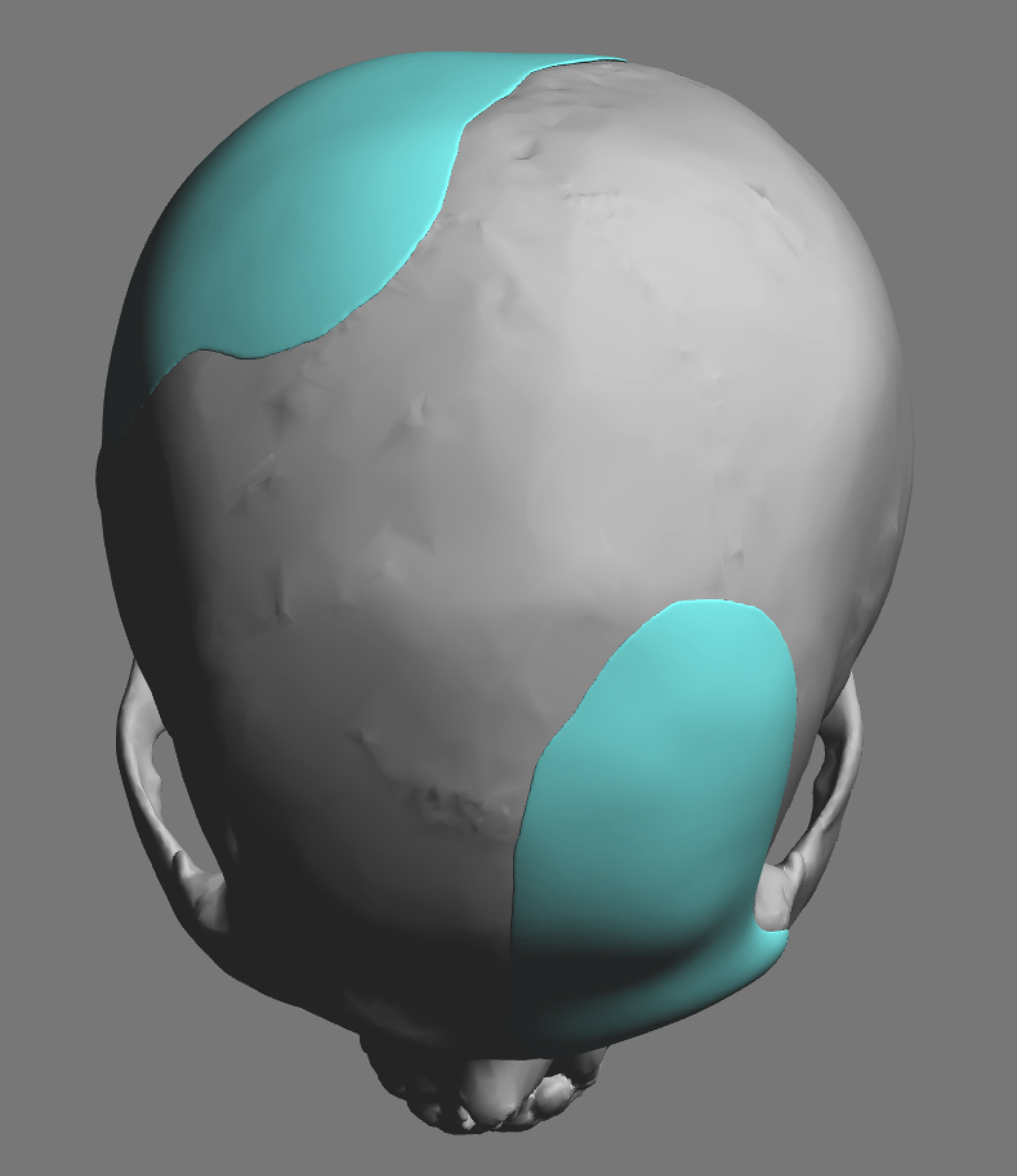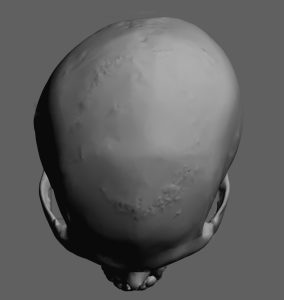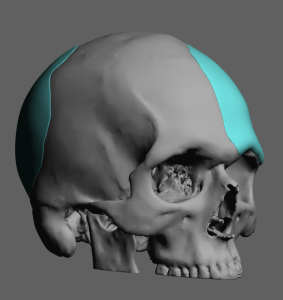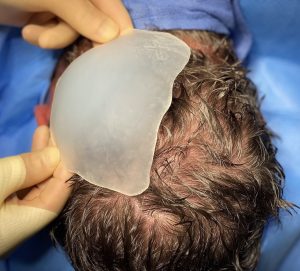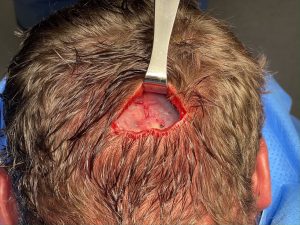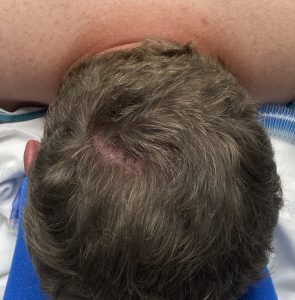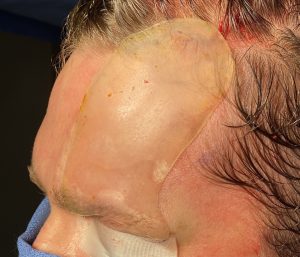Background: Plagiocephaly is a well known aesthetic head shape deformity in which the origin of the name means twisted skull. When viewed from above the skull shape is also often called cranioscoliosis based on its axis of rotation. in the majority of cases this rotation is counter clockwise, meaning the right back of the head is flat and the left forehead is flat. The reasons why this counterclockwise rotation is seen more frequently than a clockwise rotation is not known. But regardless of the rotation axis the back of the head usually has a far greater flattening than on the front of the head.
In adult plagiocephaly many more men present for aesthetic improvement than females. This is undoubtably because the male head shape is much more exposed than that of women due to less hair coverage. While 100% of the patients who appear for plagiocephaly correction are concerned about the back of the head flattening a much smaller percentage have forehead shape concerns. This is either because their forehead is not affected at all or that the flattening effect is very mild.
When there is a visible forehead flattening present such patients may desire to treat both the front and back of the head. This can be down with custom designed implants. The only question is whether the patient wants to treat both skull areas at the same time or separately.
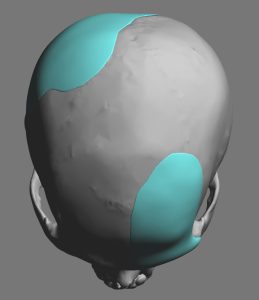
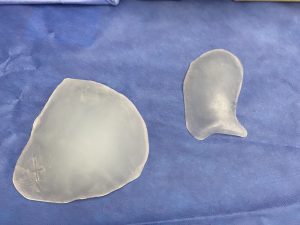
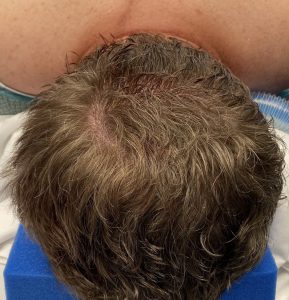
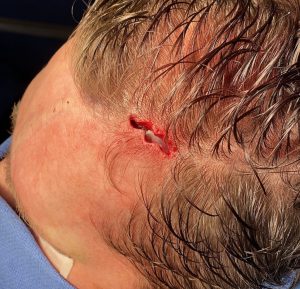
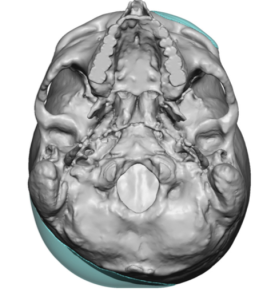
Case Highlights:
1) While the most common effect of plagiocephaly is a flat back of the head on one side, the opposite side of the forehead can also be affected.
2) In a more complete correction of plagiocephaly in adults combined forehead and back of head implants are used to correct the flattened areas.
3) Both forehead and back of head skull implants can be placed through small incisions that do not carry much aesthetic liability.
Dr. Barry Eppley
World Renowned Plastic Surgeon

